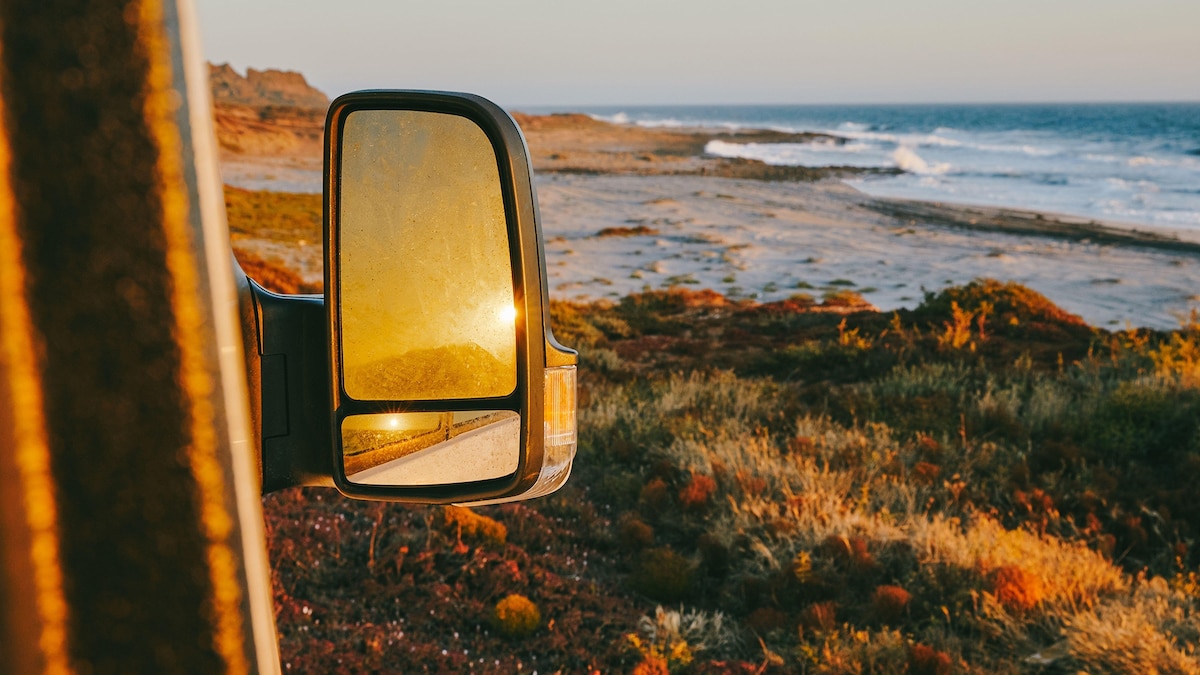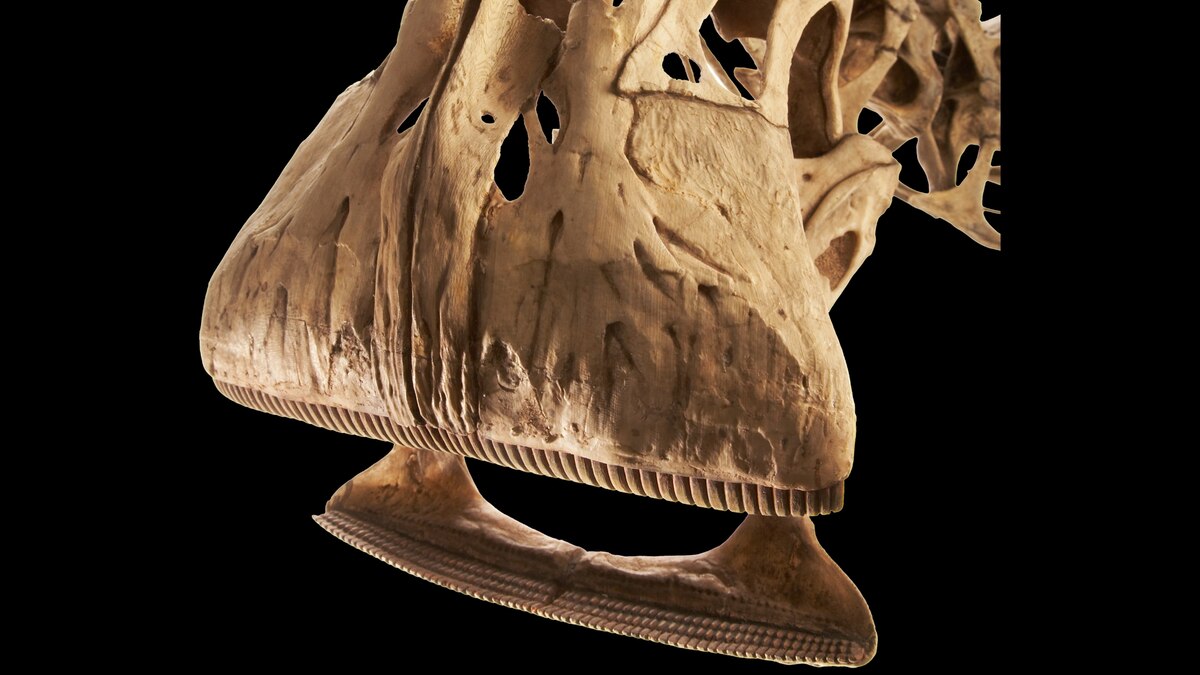Now Reading: How to plan an epic road trip through Baja California
-
01
How to plan an epic road trip through Baja California
How to plan an epic road trip through Baja California

Mexico was made for road trips. Its landscapes are diverse, breathtaking, and adventure-packed, as well as filled with cultural experiences and mouthwatering cuisine. My husband and I have driven over 10,000 miles across Mexico in our RV, and while we’ve loved our year-and-a-half trip, one route stood out above the rest: the Baja California peninsula.
Jutting off from California and wedged between the Pacific Ocean and the Gulf of California, the Baja California peninsula is the ultimate road trip for adventure seekers. The journey down Highway 1 may be rough in places, but it rewards you with sweeping coastal views, quiet beaches, dramatic desert backdrops, and unforgettable experiences.
You can sip wine in Mexico’s largest wine region, spot gray whales on a boat tour, swing in a hammock on a secluded beach, and visit a world-class beach.
Best of all, road tripping through Baja California is easily doable for U.S. and Canadian travelers. All you need is a vehicle, passport, and a plan. In this guide, I’ll share some of the best stops along the route, tips we learned from experience, and why this is one Mexican road trip you don’t want to miss.
(“Rocky, wild and unpredictable”—why Baja California is ideal off-roading country)
Prepping for the road trip
There are a few things you’ll need to prepare before hitting the road. First, and most importantly, is vehicle insurance. If you plan to drive a rental or your own vehicle in Mexico, you’ll need special liability coverage issued by a Mexican insurance provider. It’s required by law and cannot be issued by your home carrier.
The cost varies but typically costs a few hundred U.S. dollars, depending on how long you’ll be traveling. We spent about five months meandering through the peninsula, lingering a week or two in each destination. The more time you have, the better. However, many travelers complete the route in two weeks.
Safety is a common concern when visiting Mexico. Many highways in Baja California are narrow, steep, poorly maintained, and lack guardrails. You’ll also want to keep an eye out for wandering livestock and unexpected obstacles along the way.
Cell phone service is sparse in this region, too. Make sure you have offline maps or directions to help you navigate—and never drive at night.
(Baja California’s recipe for saving fishing communities)
Section 1: U.S. border to Guerrero Negro


Valle de Guadalupe, about 90 miles south of San Diego, is Mexico’s largest wine region.
Photograph by Jake Naughton, Nat Geo Image Collection (Top) (Left) and Photograph by Jake Naughton, Nat Geo Image Collection (Bottom) (Right)
Cross the border into Mexico from San Diego. Tijuana is one of the world’s busiest land crossings, so I recommend using the Tecate or Otay crossings instead. Border agents will check your passport and vehicle registration before directing you to the immigration office to get your tourist permit, called an FMM.
From there, head about two hours south to Valle de Guadalupe, Mexico’s largest wine region and a paradise for food and wine lovers. Spend a day or two wine tasting and dining at Michelin-starred spots. Don’t miss a meal at La Cocina de Doña Esthela—a restaurant that Michelin says “wins breakfast.”
After, continue south on Highway 1 toward Guerrero Negro. It’s a long, remote stretch that takes about nine hours to drive. Fill up on gas as often as you need, as there’s a particularly long gap (about 200 miles) with no gas stations near Cataviña.
Break up the drive into two days, staying in San Quintín. This town is revered for its fresh oysters that can be easily enjoyed at Restaurante Bar Jardines, just off the highway. In Cataviña, don’t miss the chance to stretch your legs among the giant cardón cacti and see ancient petroglyphs.
Section 2: Guerrero Negro to Mulegé
Guerrero Negro is a town known for two things: Salt and whales. Each winter, hundreds of gray whales migrate to Laguna Ojo de Liebre to give birth. From January to early April, you can take a guided boat tour to see these gentle giants.
(In this lagoon, the whales come to you)
Stay one night to experience the whales before driving four hours south to Mulegé, a palm-filled oasis with incredible beaches. This area is home to some of the most pristine shorelines in Mexico, with turquoise water, abundant sea life, and beachfront palapas perfect for camping.
If you’re short on time, this makes a great turnaround point to return north. But if you have more time, keep heading south into Baja California Sur—some of the best stops are still ahead.
Section 3: Mulegé to Loreto

Mulegé is home to some of the most pristine shorelines in Mexico.
Photograph by Christian Heeb, laif/Redux


It’s 87 miles between Mulegé and Loreto, and can take about two hours by car.
Photograph by Hemis, Alamy Stock Photo (Top) (Left) and Photograph by Hemis, Alamy Stock Photo (Bottom) (Right)
Your next stop is two hours south in the charming Pueblo Mágico (a “charming town” classification by the Mexican government) of Loreto. Once the capital of the Baja California peninsula, Loreto offers rich history, a welcoming expat community, and a walkable downtown filled with great restaurants and bars.
It’s easy to spend a few days here, but don’t miss a boat tour through Loreto Bay National Park. This protected marine area includes five islands that host whales in the winter, along with migrating birds, endemic wildlife, and pristine beaches.
Section 4: Loreto to La Paz
La Paz is the capital of Baja California Sur and the state’s largest city, but still has a laid-back charm. Don’t miss Playa Balandra, often ranked among the world’s best beaches for its shallow turquoise waters and iconic mushroom-shaped rock.
There’s plenty to do in La Paz, but our favorite experience was swimming at Espíritu Santo Island, another stunning protected marine park. If you have extra time, head an hour southeast to La Ventana, a small beach town known for world-class windsurfing. If you time the tides right, you can even soak in beachfront hot springs.
Section 5: La Paz to Todos Santos and Cabo San Lucas


San José del Cabo has something for everyone, from a national park with coral reefs to all-inclusive resorts.
Photograph by Efrain Padro, Alamy Stock Photo (Top) (Left) and Photograph by Christian Heeb, laif/Redux (Bottom) (Right)
The final stretch of your Baja California road trip brings you to the southern tip of the peninsula—Todos Santos and Los Cabos. Start in Todos Santos, a Pueblo Mágico and one of the hottest destinations in Mexico. With incredible beaches, a thriving food scene, and boutique shops, it deserves at least a full day, if not more.
San José del Cabo is your gateway to Baja California’s major international airport and offers a mix of all-inclusive resorts and luxury stays. For a more remote beach escape, continue east to Cabo Pulmo National Park, home to one of North America’s healthiest coral reefs and excellent snorkeling, before making your way back toward the border.
(This Mexican health spa helped shape modern wellness travel)
Liz Brumer-Smith is a Florida-based freelance writer and travel creator behind the channel Eat See TV. In 2017, she and her husband hit the road full-time in their RV with their two cats, exploring North America and documenting their adventures on YouTube and their blog. Today, Liz shares stories of food, culture, and destinations around the globe.























